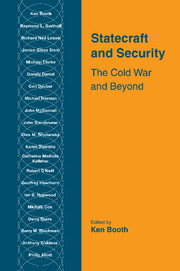Book contents
- Frontmatter
- Contents
- List of contributors
- Preface
- Introduction
- Part one Cold War: lessons and legacies
- Part two Post-Cold War: powers and policies
- Part three Beyond: resistances and reinventions
- 14 International peace and security in the twenty-first century
- 15 Affluence, poverty and the idea of a post-scarcity society
- 16 The future of the human past
- Conclusion: security within global transformation?
- Index
14 - International peace and security in the twenty-first century
Published online by Cambridge University Press: 06 October 2009
- Frontmatter
- Contents
- List of contributors
- Preface
- Introduction
- Part one Cold War: lessons and legacies
- Part two Post-Cold War: powers and policies
- Part three Beyond: resistances and reinventions
- 14 International peace and security in the twenty-first century
- 15 Affluence, poverty and the idea of a post-scarcity society
- 16 The future of the human past
- Conclusion: security within global transformation?
- Index
Summary
Three opportunities have been presented in the twentieth century to create an effective global system of collective security. The first two followed wars of great bloodshed and human suffering, yet the world's political leaders proved incapable, or unwilling, to take advantage of the revulsion with war to create effective means of containing international conflict. With the end of the Cold War, the paralysis that has crippled the United Nations' collective security system for nearly fifty years has been lifted and a third opportunity presented. So far, however, the world's political leaders again seem unable to transcend the limits of national politics and transform reigning concepts of international security into a paradigm that can keep the peace in the coming century.
Still, there is some reason for optimism about the future. The basic trends in human interactions, both within and across states, point increasingly to fundamental changes in the structure of the world community. Technological trends are particularly important; they not only drive basic economic and political developments, but are creating a truly global community in which shared values can form a lasting basis for a more peaceful world. These changes, eventually, will make possible the creation of more powerful international institutions charged with maintaining world peace and security.
In this chapter, I first describe the trends that are fundamentally transforming the international system.
- Type
- Chapter
- Information
- Statecraft and SecurityThe Cold War and Beyond, pp. 289 - 307Publisher: Cambridge University PressPrint publication year: 1998



